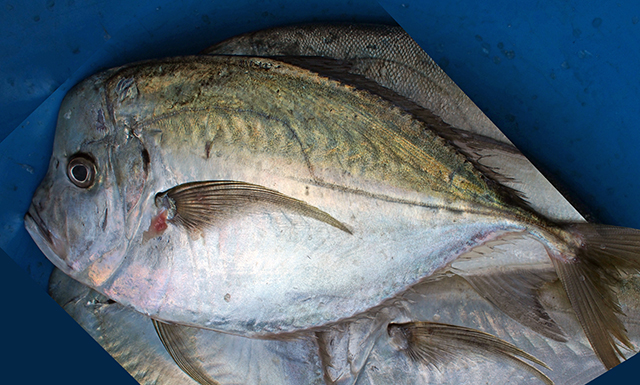| Carangidae (Jacks and pompanos), subfamily: Caranginae |
| 40 cm TL (male/unsexed); max.weight: 1,500.0 g |
|
demersal; brackish; marine; depth range 20 - 100 m, |
| Eastern Atlantic Ocean: Madeira, Canarias, Cabo Verde and from Senegal to Namibia. Replaced by Selene setapinnis in western Atlantic. These two species have not been adequately studied and may prove to be conspecific. |
|
Dorsal spines (total): 9-9; Dorsal soft rays (total): 23-24; Anal spines: 1-3; Anal soft rays: 18-20. Diagnosis: body short, deep (depth comprised 1.7-2.3 times in fork length) and strongly compressed; head with a typical hump above eyes and a steep frontal profile that is slightly concave in front of eyes; lower jaw prominent; 2 dorsal fins, 1st with 8 spines that are very short in adults, 2nd with 1 spine and 23 or 24 soft rays; anal fin with 2 anterior detached spines (resorbed in adults), followed by 1 spine and 18-20 soft rays; anterior lobes of soft dorsal and anal fins small or indistinct; pelvic fins very short, nearly rudimentary; body (except breast) entirely covered with minute cycloid scales embedded in the skin; lateral line distinctly arched over pectoral fins, with some weak scutes on the straight posterior part; 2 lateral keels at base of caudal fin (Ref. 57392). Silvery with faint dusky opercular spot; juveniles with oval black spot over straight lateral line (Ref. 3197).
Coloration: entirely silvery with bluish reflections that are more pronounced on dorsal half; a blackish spot at upper angle of gill cover; in juveniles, another blackish spot on sides of body, at the inflexion point of the lateral line; fins hyaline (Ref. 57392). |
| Adults usually found near the bottom (Ref. 4233, 57392). Occasionally enters lagoons and estuaries, especially during juvenile stage (Ref. 57392). Juveniles occur in surface waters often near bays and river mouths (Ref. 4233). Form schools (Ref. 4233, 57392). Feed on crustaceans and small fishes (Ref. 4233). Eggs are pelagic (Ref. 4233). |
|
Least Concern (LC); Date assessed: 10 May 2013 Ref. (130435)
|
| harmless |
Source and more info: www.fishbase.org. For personal, classroom, and other internal use only. Not for publication.
